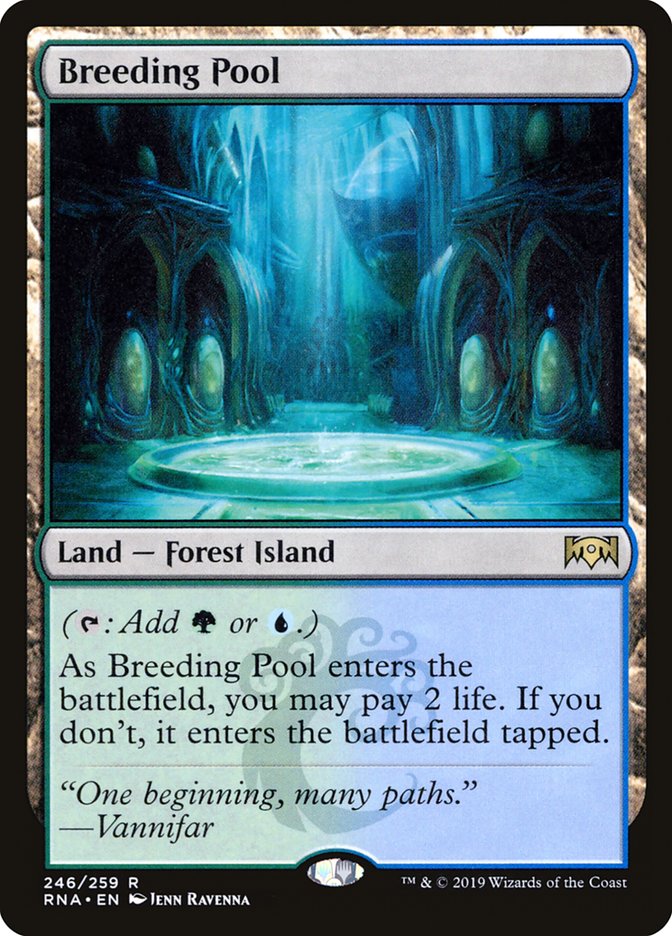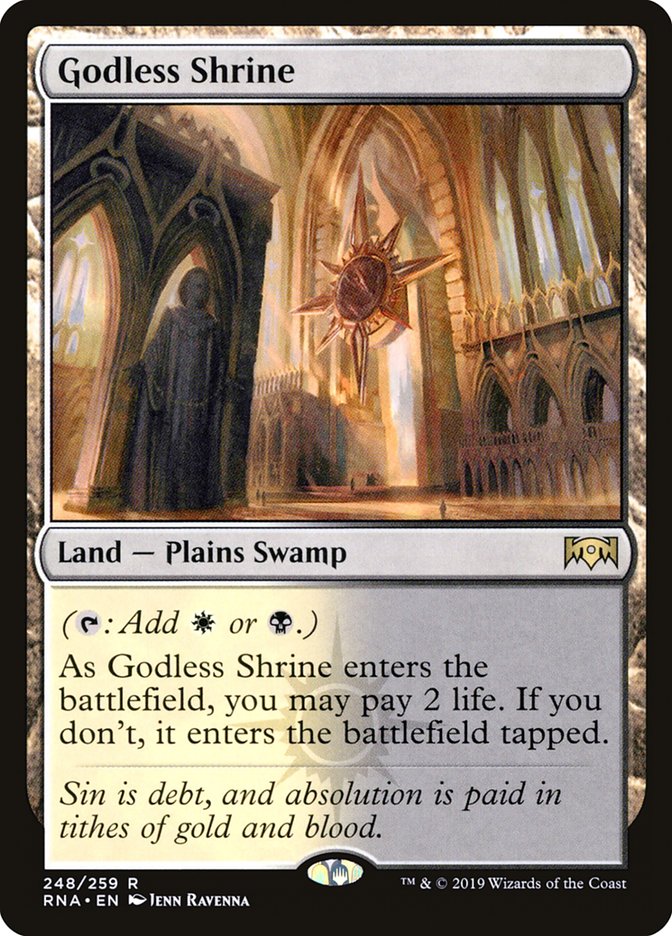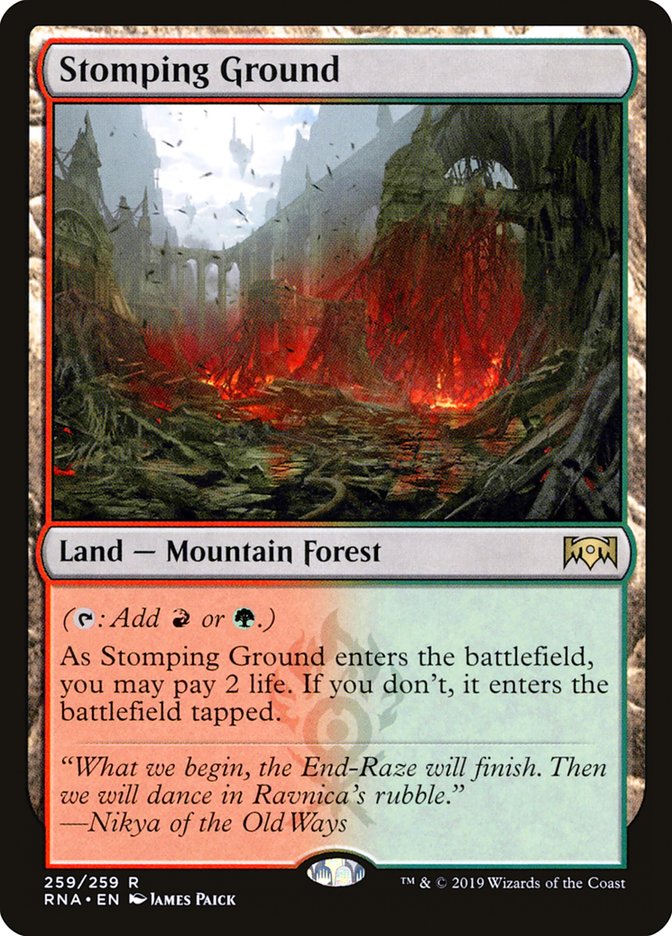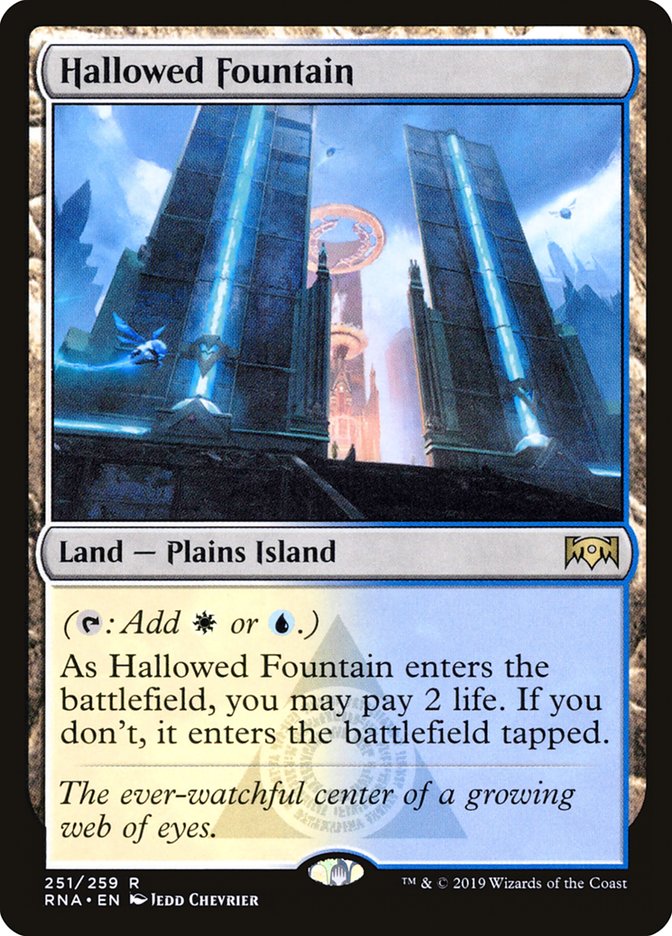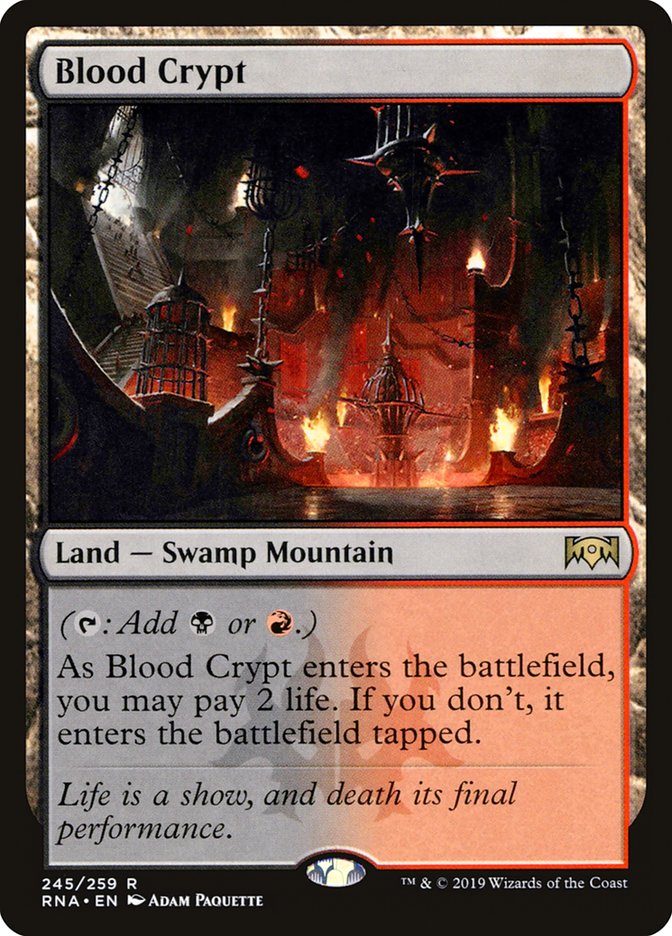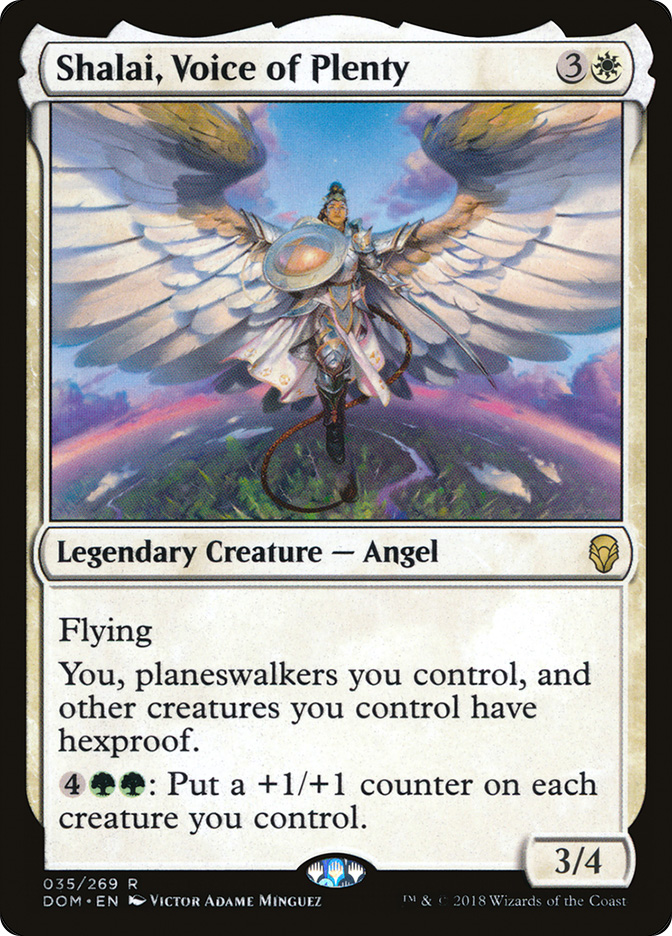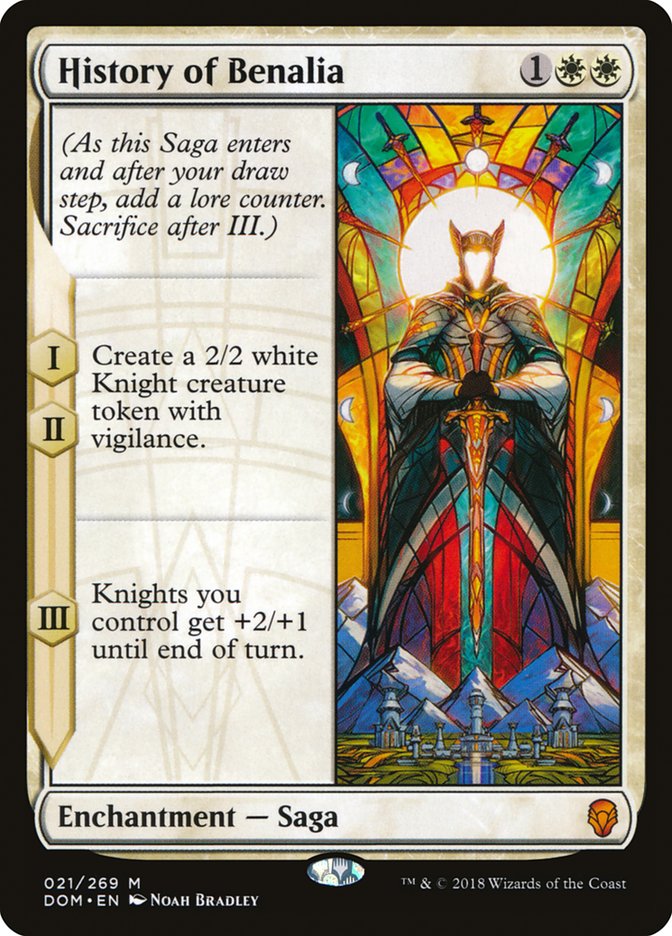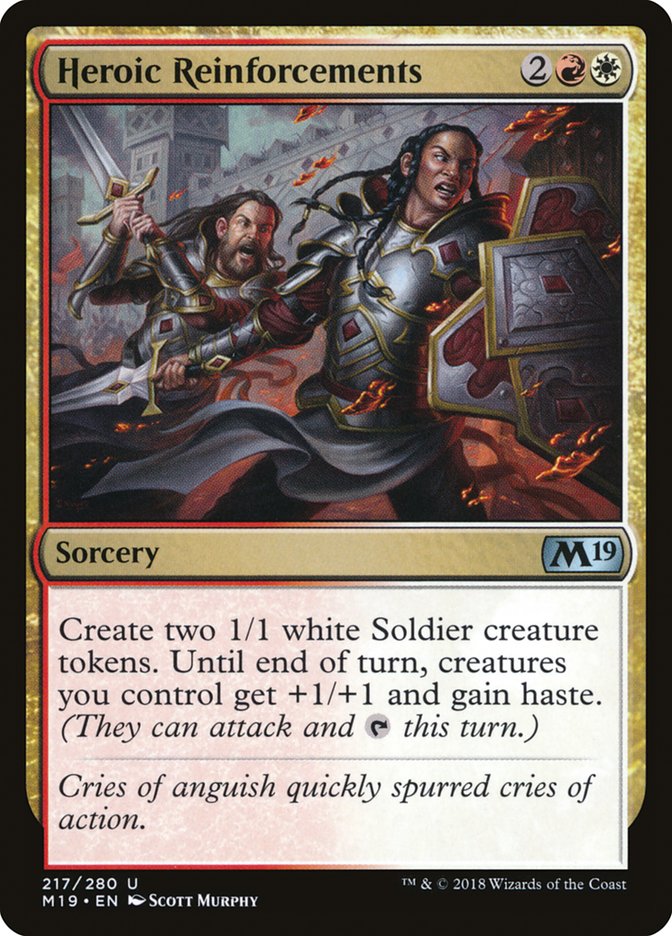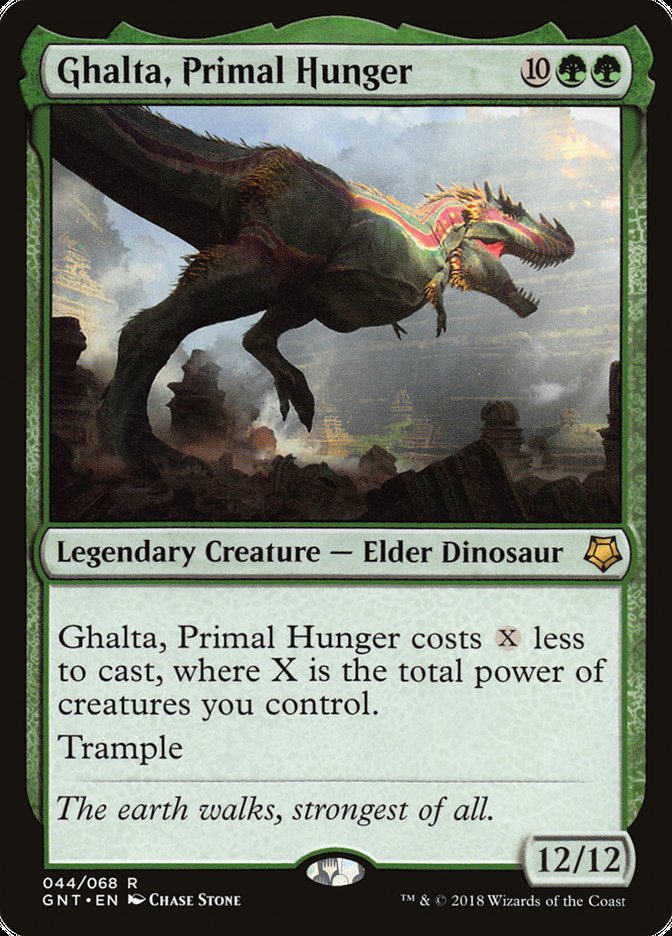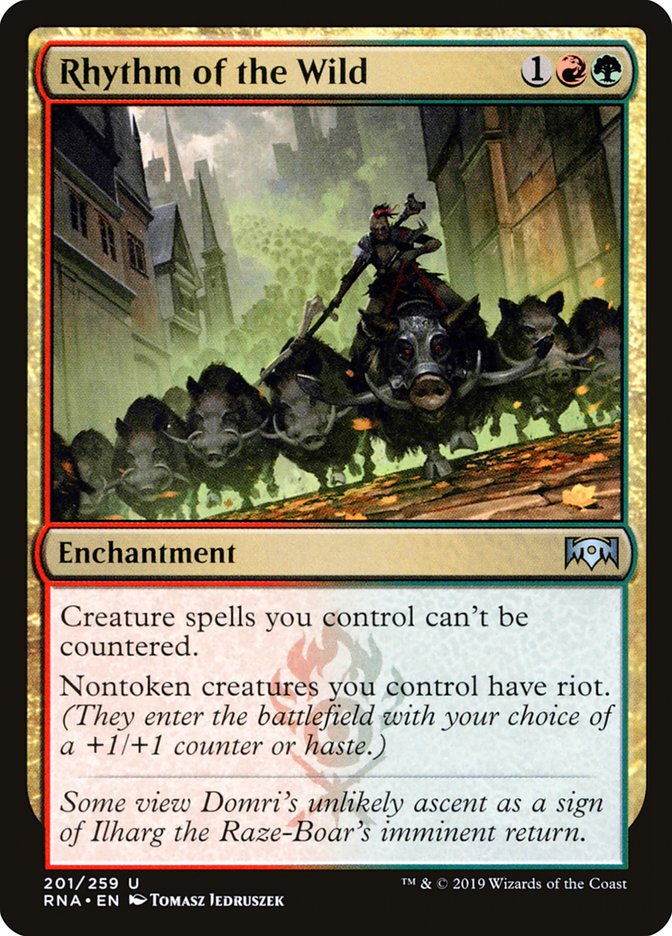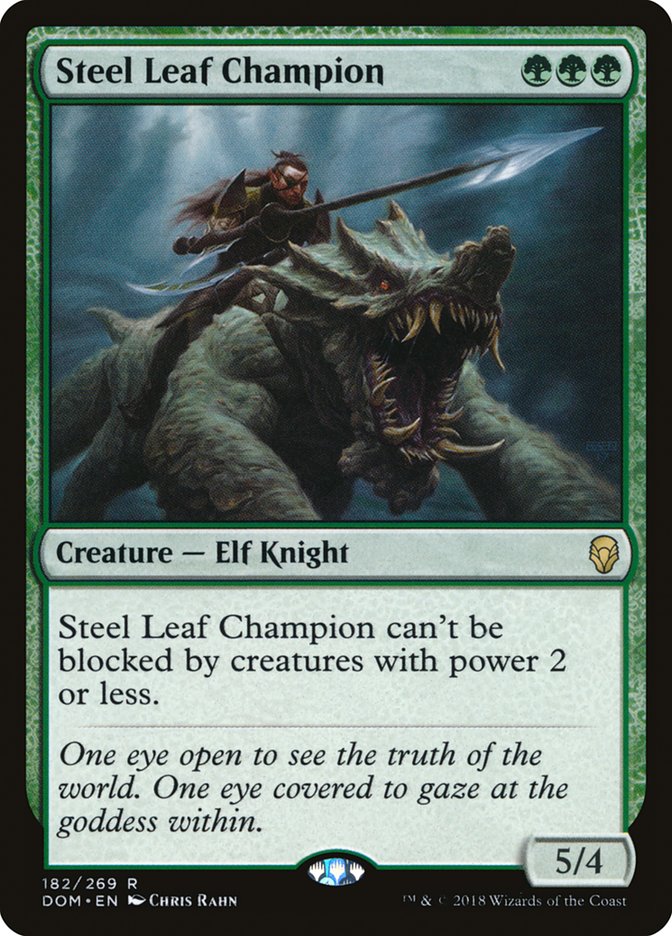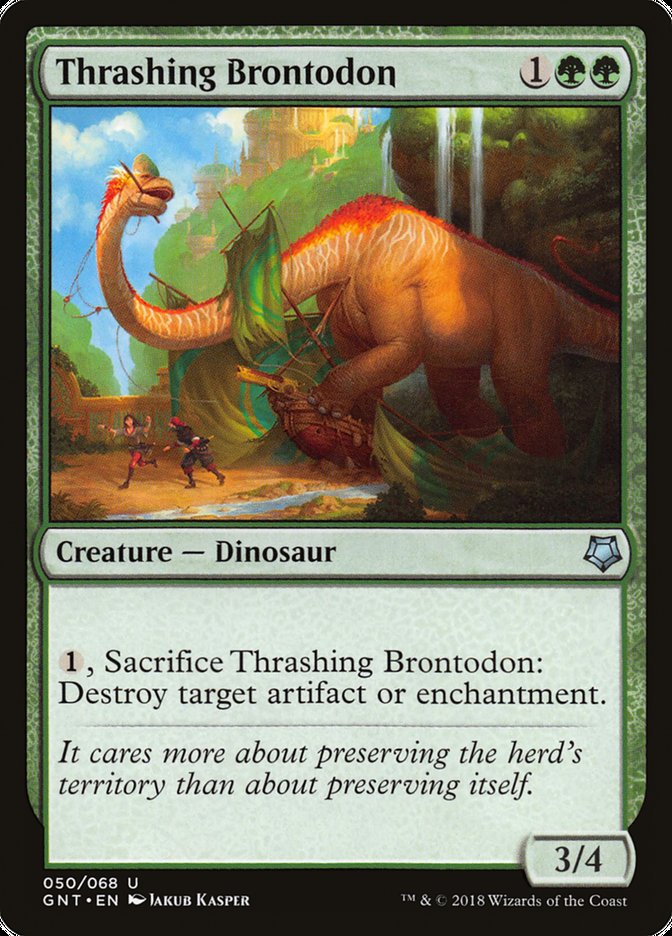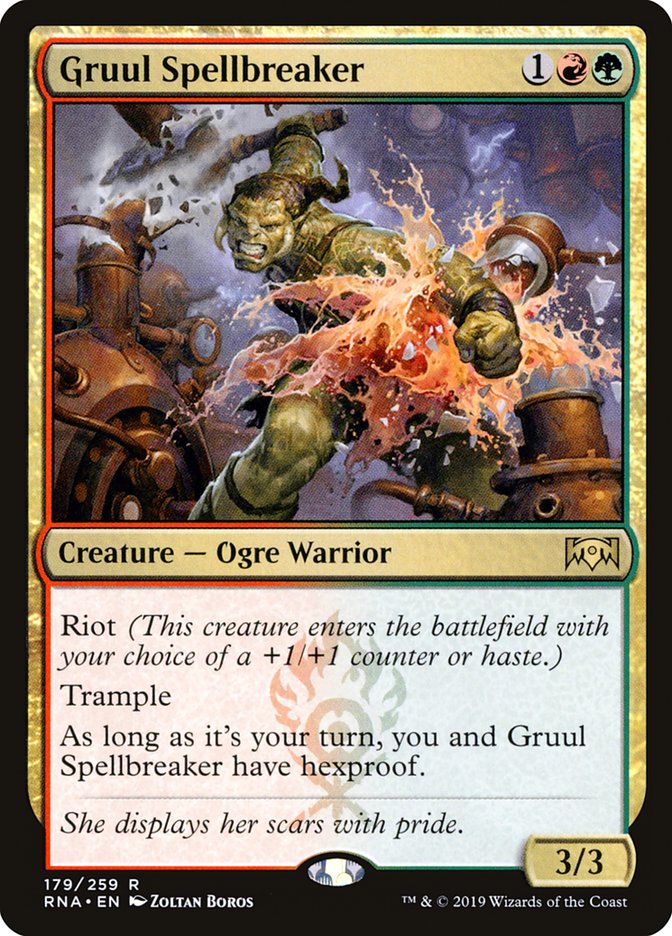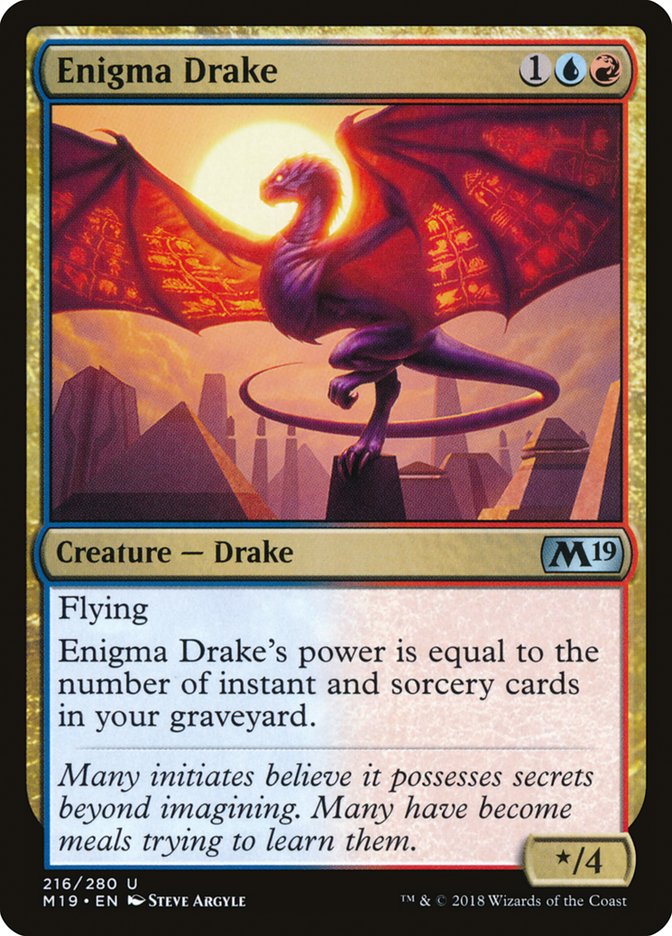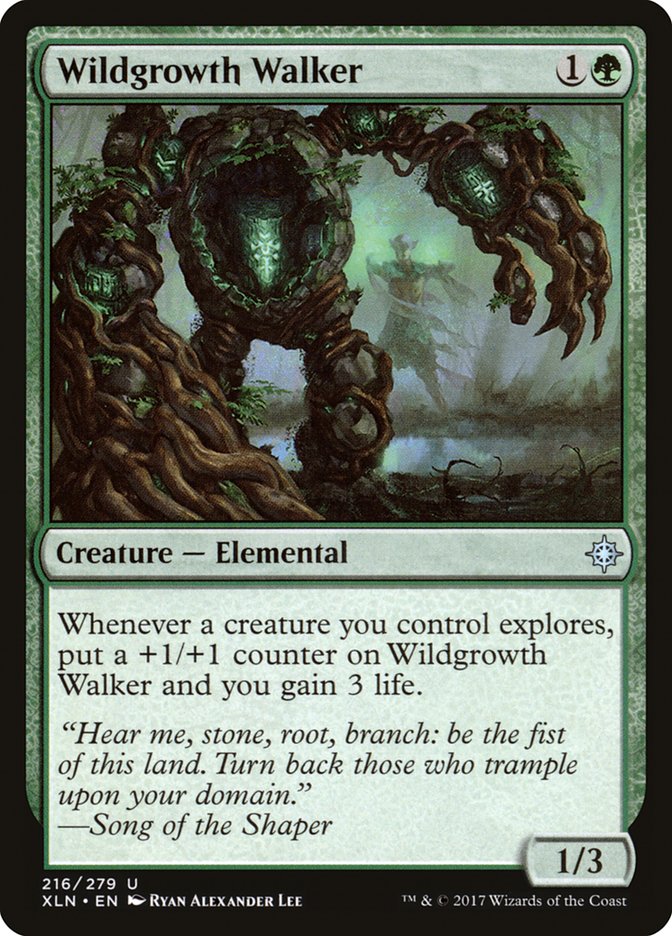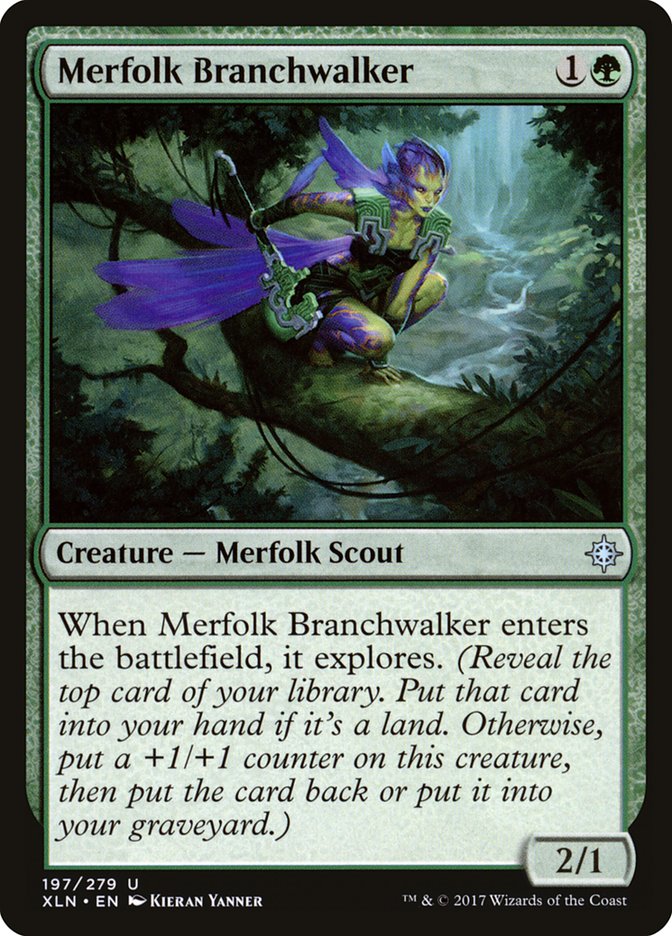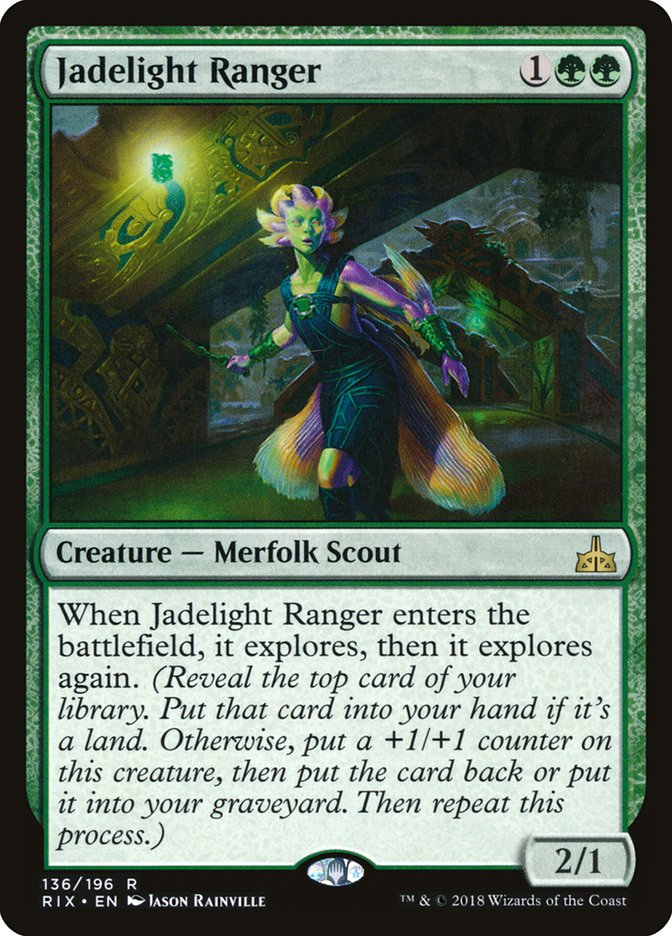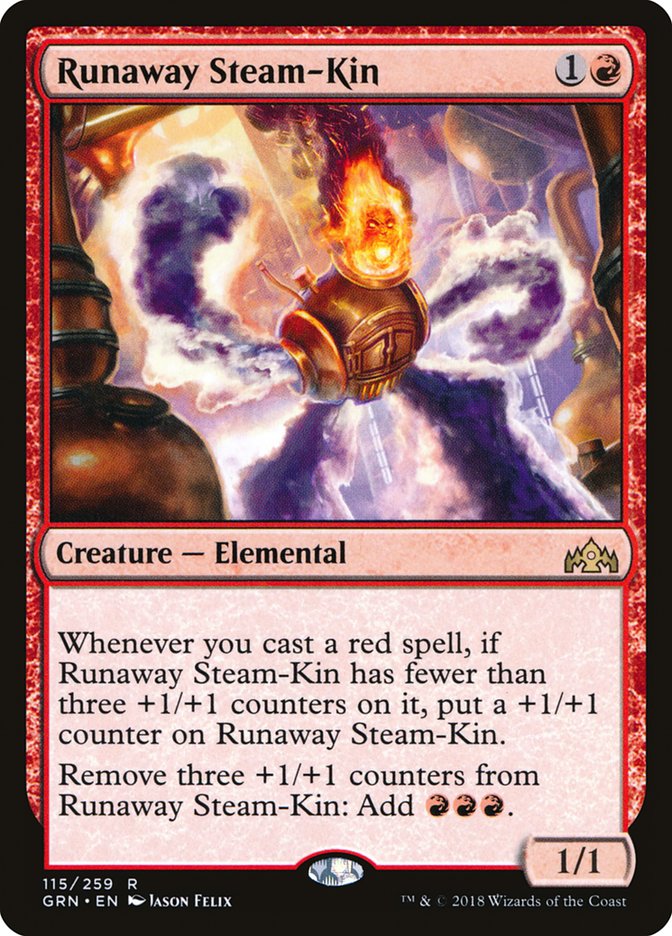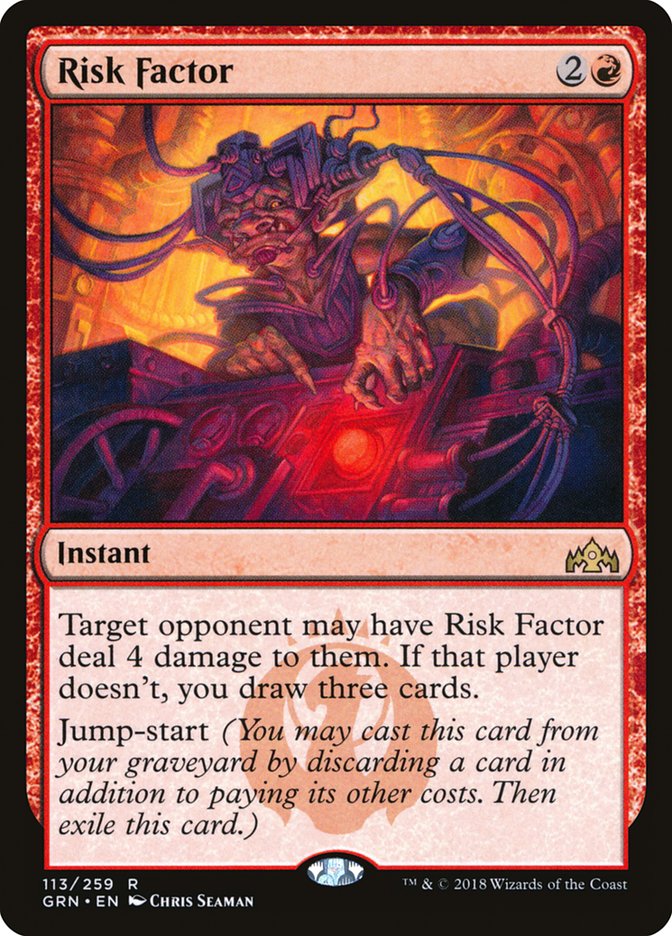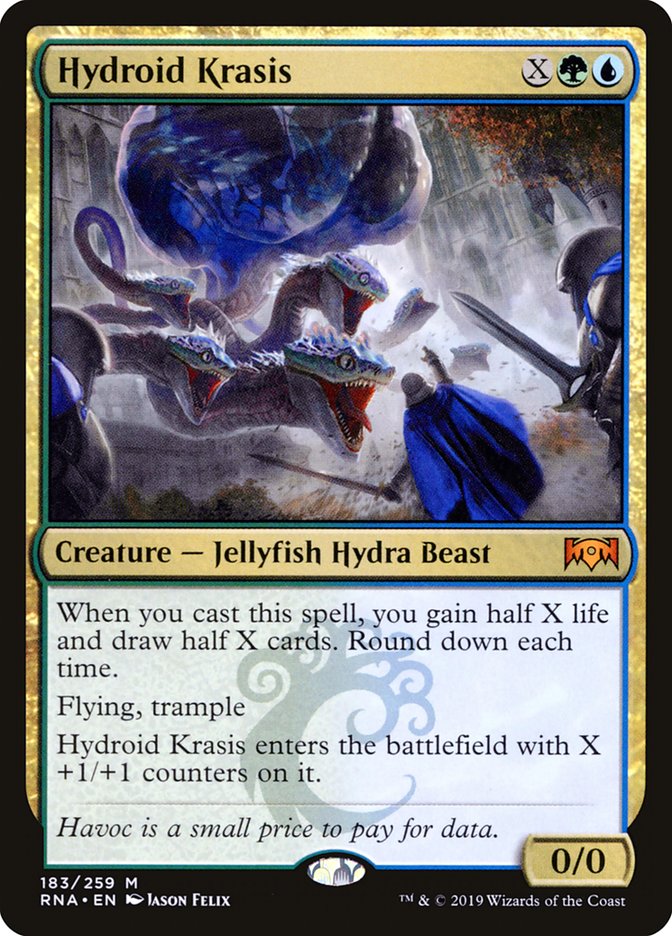The release of Guilds of Ravnica brought some exciting times, but
unfortunately Guilds of Ravnica Standard was a tad stale toward
the end. Golgari Midrange and Izzet Drakes asserted their dominance, and
although the specifics of those decks changed several times over the course
of the format and other decks rose up to fight them, they were the clear
winners. That Standard format set the stage for Ravnica Allegiance’s debut this weekend, which brings with it the
other five guilds, and most importantly, the other five shocklands.
Ari Lax made a good case for three-color decks being the best place to look
now that we have pristine mana, using the argument that those are what the
best decks consisted of last time we were on Ravnica. Granted, when your
mana is good and you don’t get too punished by playing three colors, you
likely should since your power level will typically eclipse the two-color
competition, but I’m honestly not sure that’s the case here. As always,
context is key.
The multi-colored cards are arguably less powerful this time around.
Additionally, the punishment for being three colors is fiercer, as Mono-Red
and Boros Aggro are both blisteringly fast aggressive decks that didn’t
really exist last time. There were things like Gruul Aggro and Naya Blitz,
but those were largely dependent on creatures, unlike the sixteen-burn
spell red decks and Heroic Reinforcements we must deal with now.
By far, the most important thing for #SCGINDY is finding a way to beat
Mono-Red. Whether or not Mono-Red’s Arena success will translate to real
life remains to be seen, but the deck is still incredible and will be
everywhere. You must play by certain rules if you want to beat Mono-Red
Aggro. Traction is huge, as is being able to turn the corner and clock them
before they burn you out. Because maintaining traction is so difficult,
racing is nearly impossible.
Here are some shells that I’ve found to be effective against Mono-Red and
are mostly what I’d build around for #SCGINDY.
While being four mana is clearly not ideal, Shalai has arguably the most
powerful impact against Mono-Red. When backed up by removal to stop their
constant sources of damage, they basically have to spend two spells to
remove her.
White aggressive decks absolutely have the tools to race Mono-Red Aggro.
They also tend to do a pretty job of brick-walling the opposing red
creatures.
Ghalta with haste isn’t particularly fair. However, Gruul lacks the
disruption that other decks do and it mostly consists of creatures, so
their options are limited. That said, they have some of the best rate cards
in the format.
A hasty Ghalta is one way to swing a race, but some versions of Gruul have
been packing Collision // Colossus plus Thud to steal wins. In a pinch,
Skarrgan Hellkite can also provide the much-needed haste for winning a
race. That typically ends up a turn short against a normal draw, which
makes me lean on the Colossus side of things if I’m really trying to beat
up on red.
Four toughness is the easiest break-point to point out considering the red
decks are true burn decks, and therefore rarely have Lava Coil in their
maindeck. Similarly, Thorn Lieutenant makes their life difficult by being
hard to attack through and hard to remove, which is all the four-toughness
creatures are trying to accomplish in the first place.
If you want to brick wall red decks early, green has some great options.
Similarly, Enigma Drake is quite good, both as a blocker and an attacker.
Sadly, the rest of the deck is lacking against red, and the fact that most
of the time they’re just spinning their wheels means that Izzet is often
the underdog.
If you could play eight copies of each, then you’d have a deck.
“Gain six life and put up a giant wall” has been frustrating red decks
since Jadelight Ranger’s printing. Again, green has an early-game package
that’s excellent against red.
Gruul
Of all the new Ravnica Allegiance guilds, Gruul is arguably the
toughest to build, which is odd to say about a deck whose goal is play to
creatures and smash people.
The successful versions from Magic Online used Shock and Lightning Strike,
but I’m not a fan of that approach. In theory, having the reach could help
close games, but if those cards were creatures, I’d likely be better off
curving out and putting pressure on my opponent. If Gruul had literally
zero ways to close games, I might be interested, but that’s not the case.
Creatures (32)
- 4 Llanowar Elves
- 2 Ghalta, Primal Hunger
- 4 Rekindling Phoenix
- 2 Thrashing Brontodon
- 4 Thorn Lieutenant
- 4 Pelt Collector
- 4 Gruul Spellbreaker
- 4 Skarrgan Hellkite
- 4 Growth-Chamber Guardian
Lands (23)
Spells (5)
Sideboard

This deck is fast, but not the fastest that it could possibly be. Instead
of going for hyper aggression, I want some staying power and potential mana
sinks in order to compete against midrange decks.
There’s the possibility of playing a lower to the ground version of Gruul
with Collision // Colossus and Thud as a combo finish, which also gives you
outs to scary cards like Lyra Dawnbringer. Either way, having something of
a burst finish can be invaluable against decks you need to race, such as
Mono-Red Aggro.
You have the best creatures at every spot on the curve, and I wanted to
lean into that strength rather try to kill people as quickly as possible.
There are other decks that are better at killing on Turn 4 if you’re
interested.
Mardu
Judith, the Scourge Diva is a great card. Unfortunately, decks that are
built around her are typically the type that perform poorly against Goblin
Chainwhirler. You can play a more aggressive version with Vicious
Conquistador and Fireblade Artist, but those are weaker in a vacuum and
don’t necessarily solve the problem.
Unfortunately, Judith seems like she’s poorly positioned in week one. My
version is an attempt to fix some of those problems, but it’s not perfect.
Creatures (26)
- 2 Rix Maadi Reveler
- 4 Judith, the Scourge Diva
- 4 Pitiless Pontiff
- 4 Gutterbones
- 4 Hero of Precinct One
- 4 Priest of Forgotten Gods
- 4 Footlight Fiend
Lands (24)
Spells (10)
Sideboard

Hero of Precinct One necessitates the use of Footlight Fiend over Hunted
Witness, even though the stickiness of Hunted Witness would play better
with Heroic Reinforcements. I used to happily play Midnight Reaper until
the format shifted to burn-heavy Mono-Red Aggro decks, so now Rix Maadi
Reveler fills that void.
As I mentioned earlier, this deck is weaker to Mono-Red than I’d like,
which means I wouldn’t sleeve it up, but it’s a perfectly reasonable option
for those who want to.
Mono-Red
Famed red mage Austin Yost has been hovering in the top Mythic ranks on
Arena with this list:
Creatures (20)
- 4 Fanatical Firebrand
- 4 Ghitu Lavarunner
- 4 Goblin Chainwhirler
- 4 Viashino Pyromancer
- 4 Runaway Steam-Kin
Lands (18)
- 18 Mountain
Spells (22)

Obviously best-of-one is a different animal than best-of-three, so I would
recommend against copying this maindeck completely. Eighteen lands is the
clear talking point, as that might not be viable in real life compared to
when you have access to Arena’s hand smoothing algorithm. Then again, Light
up the Stage does alter things dramatically. It’ll be interesting to see
where people land and what is actually the correct mana ratio for this one.
Similarly to the manabase, figuring out the correct spells to play is tough
too. Red has so many good cards that sacred cows are suddenly less sacred.
Runaway Steam-Kin is a strong source of constant damage that’s incredible
against midrange decks that are light on spot removal. When facing decks
with sweepers or the mirror match, Runaway Steam-Kin tends to die for
little value. Goblin Chainwhirler is another powerful card that’s difficult
to block, deals some chip damage, and can completely decimate mirror
matches or Boros Aggro.
That said, these cards are poor against spot removal. I’ve also found that
when you load up on card drawing and burn spells (or cards that will almost
always be good for some damage, like Ghitu Lavarunner), your card drawing
becomes more potent and your deck is more dangerous as a whole.
Last season, you could cast Risk Factor, they’d let you draw three cards,
and you’d draw Experimental Frenzy, Runaway Steam-Kin, and a Mountain.
These days, you’re basically always drawing 5-6 damage worth of cards and
that’s truly when Risk Factor is at its best. The cheaper card drawing
spells lead to having a leaner red deck with explosive damage capabilities,
so Experimental Frenzy is basically outmoded at this point.
There’s a version with Carnival//Carnage and Rix Maadi Reveler alongside
the requisite Rakdos dual lands, but that type of build has numerous
downsides. First of all, the splash isn’t free. Dragonskull Summit can
create awkward scenarios for your deck that needs to curve out and Blood
Crypt is a liability in the mirror. They also have the downside of being
worse with card drawing in general because they aren’t necessarily always
good for damage or are too clunky to really take advantage of it.
Austin’s maindeck is great, but in real life, I’d recommend increasing the
land count slightly, then playing this sideboard:
Golgari Midrange
Realistically, a midrange deck that can gain traction, has removal, doesn’t
fold to Wilderness Reclamation, and can grind with other midrange or
control decks could be great. Golgari from last season mostly fits that
mold, although we have some upgrades.
Given that Golgari is great at making land drops, thanks to the explore
package, Hydroid Krasis is always going to be X=4 or so. Even so, is that
actually better than Carnage Tyrant? It’s hard to say. Your gameplan
changes from “stick big sticky threat” to “completely attrition them out,”
but that’s not the worst thing.
Aside from the debate of whether it’s strategically superior, being able to
draw a bunch of cards and gain life will probably stabilize you and allow
you to put your opponent away quickly. It’s not the same type of resiliency
as Carnage Tyrant, nor is it the same type of end game, but Hydroid Krasis
does seem like it’s stronger given that it scales into the lategame.
What does a deck like that look like? Well, thankfully other players have
done the work for us.
Creatures (26)
- 4 Llanowar Elves
- 2 Carnage Tyrant
- 4 Wildgrowth Walker
- 4 Merfolk Branchwalker
- 1 Seekers' Squire
- 4 Jadelight Ranger
- 2 Ravenous Chupacabra
- 2 Midnight Reaper
- 3 Hydroid Krasis
Planeswalkers (3)
Lands (24)
Spells (7)
Sideboard

Creatures (25)
- 4 Llanowar Elves
- 2 Hostage Taker
- 4 Wildgrowth Walker
- 4 Merfolk Branchwalker
- 4 Jadelight Ranger
- 4 Hydroid Krasis
- 3 Incubation Druid
Planeswalkers (3)
Lands (25)
Spells (7)

Who doesn’t love midrange creatures that give you a bunch of card
advantage, ultimately capping out with a Sphinx’s Revelationesque win
condition that leaves a giant body behind? If consistency is key, playing
the explore package is what you want.
I’ve seen other versions that play Frilled Mystic as well, and I gotta say,
I rather like that idea. The mana isn’t perfect since you have to trade any
Swamps or Memorial to Follys for lands that produce blue or green, but it’s
doable.
In these sorts of decks, what’s more valuable against midrange or control
— A Frilled Mystic or a Carnage Tyrant?
Since there’s already a lategame in place, I might argue Frilled Mystic
isn’t entirely necessary. Then again, neither is Carnage Tyrant. Maybe
Hydroid Krasis does for Golgari what Chapin used to say about Cruel
Ultimatum: It’s not good against your worst matchups, but it gives you such
an edge in grindy matchups that you can afford to load your deck with worse
cards against those decks to help in your bad matchups.
If that’s the case, we should probably take advantage of that and need to
be building our Sultai decks differently.
Winning at SCG Indy
If I had to register a deck right now, it would be my Gruul deck. Sultai is
likely one of the best decks, but I don’t have enough experience with them
to be able to build them effectively. Copying MisplacedGinger’s list isn’t
a bad idea, though. Ideally, your deck for #SCGINDY needs to check Mono-Red
Aggro while also having game against Wilderness Reclamation decks.
Gruul checks those boxes nicely.


